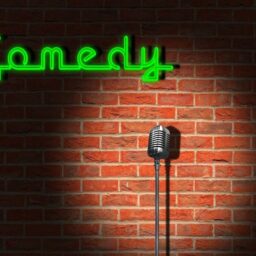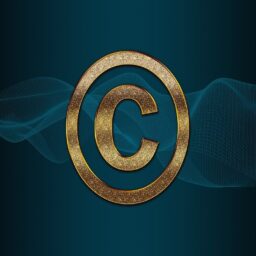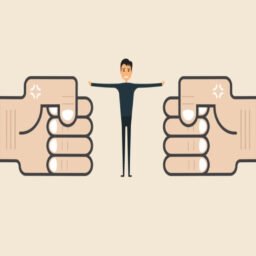Introduction
This case is a legal case that was covered in the United States. This was related to computer code and copyright law. The dispute of the case deals with applications of Java programming language and other programming interfaces (APIs). There were 11,000 source codes and their lines that were owned by Oracle. The subsidiary of Oracle is Oracle America Inc and the parent company is Oracle which originated from Sun Microsystems. Google has transitioned Android with a copyright unburdened engine. 18-956 is the docket number. API was claimed within fair use. A suit was initiated by Oracle where it came into an argument that APIs were copyrightable. US$8.8 billion was sought from Google’s sales by Oracle for the damages. The License of the versions of Androids was infringed. In the trial session, the district court level jury found out in favour of Google. It was found out that the Federal Circuit reversed both decisions and the use of Google does not come under fair use. Google applied in the Supreme court and filed a petition and the term of 2019 case was taken. This case got delayed to 2020 due to this pandemic. In April 2021, there was a 6-2 decision which was ruled by the Supreme Court and it said that the use of Google Java APIs came under the four factors of fair use. The copyrightable of APIs was bypassed and this decision reversed back the federal Circuit ruling. A case for further review was remanded.
This case is very significant specifically for the tech and software industries. This is because many software programs and functions and computer libraries are created and recreated using APIs. They are particularly from open source and belong to the functionality of API which aids developers from commercial products. This creates interoperability in developers between systems and platforms.
First phase: API copyrightability and patents
The first step or phase lasted 5 years from 2010 to 2015. Oracle was very much successful in establishing that APIs are copyrightable. Oracle claimed the right of patent infringement which was rejected. In October 2014, Google gave a petition to the Supreme court regarding this case but unfortunately, it was denied. After 5 years that is in 2019, Google filed a second petition whereby a judgment saying APIs are copyrightable was mentioned. Later the Supreme court agreed to look into this matter and review this part by November.
First district court trial: Oracle sued Google on August 13, 2010, and gave charges for copyright and patent infringement. The case came up in a district court for the Northern District of California and the judge was William Alsup. Google was aware that Android was developed by Oracle without a proper Java license and APIs were copied. Google on the other hand infringed Oracle’s copyright which was asserted by Oracle. The seven prior patents were cited by Oracle all related to java technology. They had hired Sun developers for the Java development and this made Google aware. According to Oracle, it sought monetary damages and gave a direct injunction to Google so that they stop infringing materials allegedly. This whole case was divided into three parts by the judge: patent, copyright and damages. The copyright was given distinct claims of infringement which is the nine-line check function, structure sequence SSO and API documentation. Oracle infringed 37 Java APIs from the Apache Harmony Project[1].
After complete testimony, the jury gave their judgment that Google has infringed on the copyright which included SSO, range check function and API documentation. It was still not found whether this fell under fair use or not. The court found that Google believed in Sun’s and Oracle conduct and licensed java from Sun and Oracle. Oracle talked about the fair use defence as the jury was split and the decision overturned on eight security-related files. Google asked for a matter of law regarding range checks and found them non-infringing but it was denied by the judge. In the patent trial, Google took a non-infringement defence and Oracle’s case had two patents for static initialisation and data references.
Finally, three-phase trials were conducted and judge Alsup gave a final verdict. The judge stated that APIs were not copyrightable. He further added that anyone who is under the Copyright Act, can write their own code to carry the same function and specify the methods which are used in Java API. Judge Alsup agreed that range check and security files were indeed a copyright infringement but the only remedy would be statutory damages. The maximum would be US$150,000. The copied code was entitled to only zero damages by the jury itself.
Initial Appellate Ruling
Google and Oracle filed a judgment as a matter of law which concluded the case of the district court. On listening to this, the judge dismissed the statement. A cross-appeal was filed by Google on a copying claim. Claims related to parents involved in the case who got assigned to the US court of appeals for the Federal Circuit[2]. As we know, the Copyright Act protects the original work of authorship which the author has expressed in their own words”. The first thing was assessed by the court was whether the expression of the programmer was original. The court concluded that the API package of Oracle was creative and original and it resembled taxonomy. The first trial said that the work of Oracle was original. It decided to conduct a second trial to decide whether the use of Google was original or not and whether it came under the doctrine of fair use[3].
Second Trial: Doctrine of Fair Use
The second trial took place on May 9, 2016. As it was already held that API was copyrightable but it was yet to decide on the part of Google whether their use was fair or not. Deliberations began. Oracle started asking for damages and compensation up to US$9 billion. The jury after deciding gave their statement that Android has not infringed Oracle copyrights and its reimplementation of 37 Java APIs for fair use.
Second Ruling
Oracle was completely heard from their side in the year 2017. And in 2018, the court ruled in favour of Oracle. Till then, fair use was yet to be decided by the jury and judge. A reference of the Supreme court case was taken to rule this case “Campbell v. Acuff-Rose Music, Inc[4]” where the judge told that there has to be truth in literature and a proper science in art. Three components arise in this case which was the legal standard that governed the question and the historical facts, the cases and satisfaction of the legal test by the cases. It was found that Google copied the 37 Java API packages and there were 11,500 copyright codes of Oracle. Google’s use did not fall under fair use though factual matters were in favour of Google. It was found that Google prevented interoperability and has refused a license from Sun. Also, this has harmed Oracle to a great extent and resulted in undesired contractual terms. Google wanted to avoid the drudgery of rewriting the code and needed to implement 170 lines. After this as well, the court decided that it does not fall within valid grounds for fair use. Later Google also filed a writ of certiorari petition to the Supreme court to challenge the rulings made in favour of Oracle.
Decision
After careful consideration of the Supreme court, they found that the use of Java APIs by Google was within the limits of fair use. Google transformed the Java APIs to expand the use of Android-based smartphones. Judge Breyer stated that the actions of Google had met all four factors and it helped users to work in a new and transformative program. Thus the copying of Google did not violate the copyright law and it was within the boundaries of Fair use.
Analysis
This case has different significant effects and a huge impact on past and future software development. Several concerns have been raised regarding software Innovation, the potential for the actors to choose rights to old software as well as file claims if necessary against the companies. Thus, if the ruling would stand, then companies would come up with incompatible standards to prevent them from complex litigation. They would implement the process deliberately and it would move away with the current trend in development. If the complete judgment would go in favour of Google, then the protection for the copyright might become weak for software code developers. This would allow the competitors or opponents to have improved products and grow more with innovative ideas. On the other hand, if the judgment would go completely in favour of Oracle, then this victory would let the copyright owners use the copyright on APIs. This would further prevent the use of interoperable alternatives through reverse engineering.
Conclusion
The court is very much aware that whatever decisions the court would take will give rise to narrow questions. The justice knew and dismissed the concerns that the “sky will wall” if the court ruled in Oracle’s favour. The same goes on if the court ruled in Google’s favour. We can get a takeaway from this case, that is how the advocates and the court focused on the ostensible purpose and complete text of the Copyright Act. It was also understood how the engineers would face difficulty in the future by the court’s decision. From this case, it was very well concluded that law and policy do not always align keeping away all legal doctrines.
Author(s) Name: Sharanya Chakraborty (Surendranath Law College, Calcutta University)
References:
[1] 872 F. Supp. 2d 974.
[2] Court Docket for Oracle v. Google Appeal”. Docket Alarm, Inc
[3] https://www.potomaclaw.com/oracle-v-google-copyrightability-apis/
[4] 510 U.S. 569 (1994).









